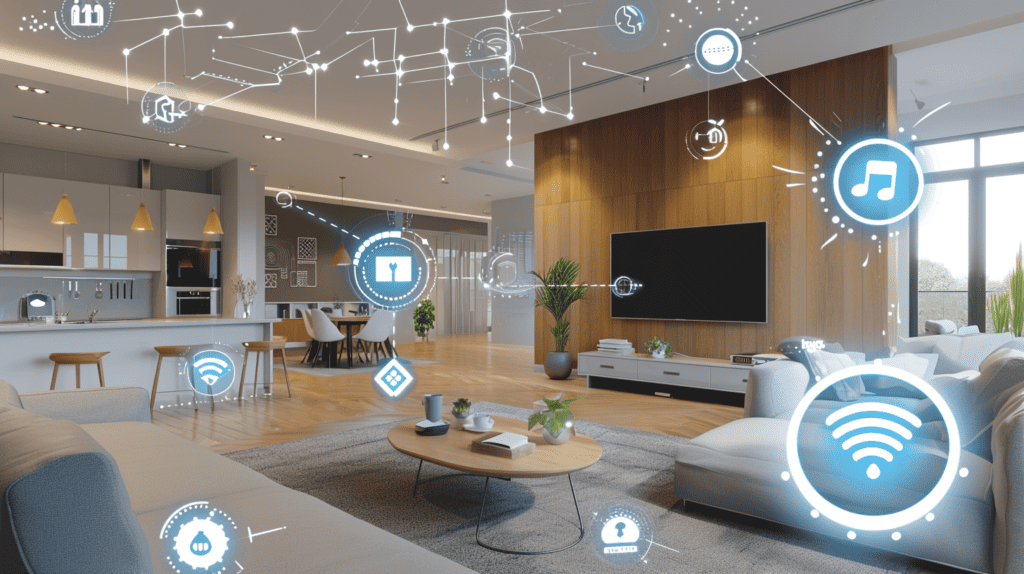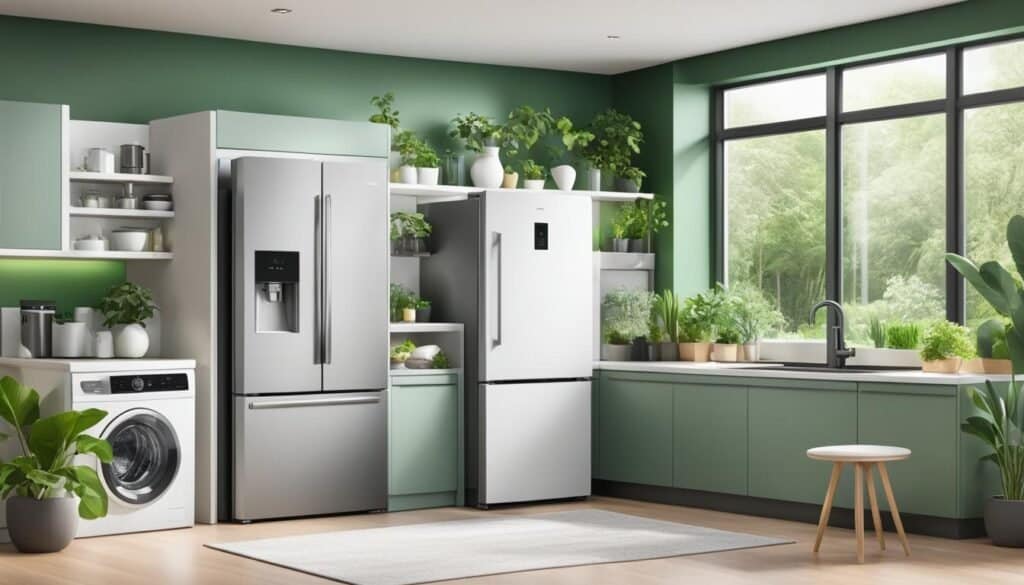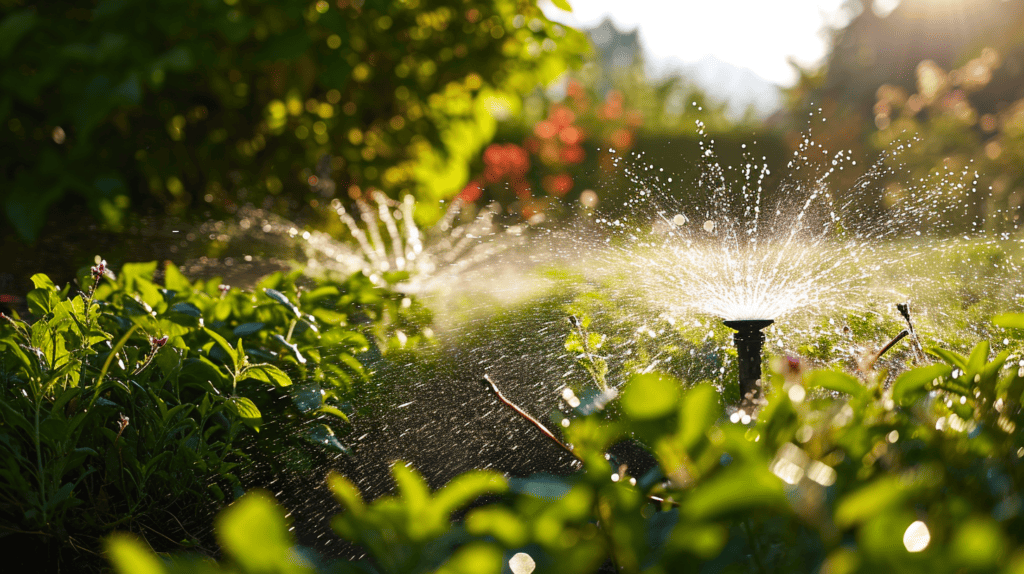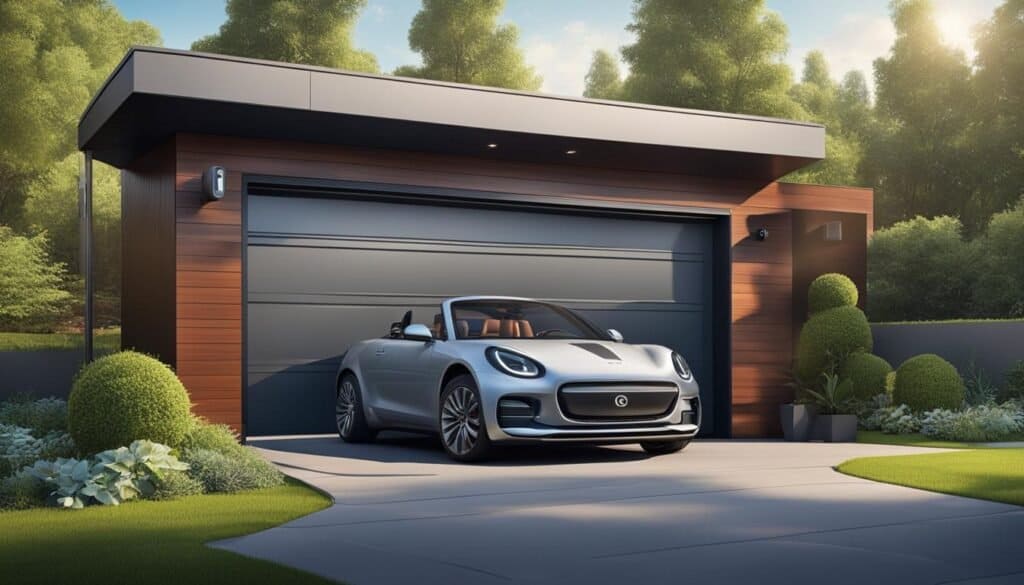Searching for ways to save money on utilities without freezing or sweating? Smart home gadgets provide an easy shortcut to energy savings.
After installing smart thermostats, lighting, and appliances, I’ve seen my energy bills plummet. These intuitive devices not only make home life more convenient, they actively manage energy usage when I forget.
Beyond just saving money though, embracing smart home automation keeps me accountable to sustainable living. With climate change threatening our communities, it feels good to do my small part and reduce my energy footprint. Lets take a look at more ways to save with energy efficiency in smart homes.
Key Takeaways
- Smart home devices significantly enhance energy efficiency, leading to cost savings on energy bills.
- Optimizing temperature control remotely ensures your home uses less energy when you’re not there.
- Investing in smart appliances and energy management tools helps you save money and conserve energy.
- Smart home energy solutions promote a sustainable lifestyle without compromising comfort and convenience.
- Home automation stands as a powerful ally in reducing a home’s overall energy consumption and costs.
9 Fastest Ways to Energy Efficiency in Your Home
Here are some of the easiest ways to promote energy efficiency in your home:
| Number | Tip | Effect |
|---|---|---|
| 1 | Upgrade to LED lightbulbs | Use 75% less energy for lighting |
| 2 | Install a smart thermostat | Save $50 per year on bills |
| 3 | Seal air leaks around windows and doors | Reduce heating and cooling costs |
| 4 | Add insulation in attics and walls | Lower energy costs from better insulation |
| 5 | Replace old appliances with ENERGY STAR models | Meet efficiency guidelines and use less energy |
| 6 | Install smart power strips | Eliminate phantom load waste |
| 7 | Use curtains to help insulate windows | Provide extra barrier against drafts |
| 8 | Wash clothes in cold water | Save energy used to heat the water |
| 9 | Change HVAC air filters monthly | Improve airflow so system doesn’t work as hard |
Smart Thermostats: Automating Temperature for Efficiency
Shifting household trends have revolutionized the way we manage our living spaces, particularly with advancements in smart appliances that ensure optimal comfort while prioritizing energy efficiency. Central to this revolution is the smart thermostat—a device inherently designed to fine-tune our heating and cooling preferences, streamline energy use, and cut down on utility bills.
Habitat for Humanity: Consider unplugging appliances or using smart power strips and smart plugs to combat “vampire voltage” – where appliances consume energy even when turned off, which can account for up to 75% of their energy use.
As I began to delve into the transformative world of smart energy, I quickly learned that the temperature in your home significantly impacts your overall energy management.
Understanding the Impact of Heating and Cooling on Energy Bills
It’s common knowledge among my friends and family that heating and cooling systems can be voracious consumers of energy. They have long been the primary contributors to high utility bills. Did you know that heating and cooling can constitute nearly half of a home’s total energy use? This is where smart thermostats enter the picture, offering not just an automation of temperature control, but also actionable insights into our energy-saving habits.
The Role of Smart Thermostats in Reducing Energy Consumption
The epitome of remote access and control in hand, I discovered that smart thermostats bring much more than convenience—they bring a mindfulness to energy savings that resonates with my eco-conscious objectives. With the ability to automatically adjust to my living patterns, these thermostats ensure that energy use in my home is not just a statistic but a controllable element.
I’ve personally set mine to conserve energy when I’m away, effectively reducing the dreaded heating and cooling costs that once seemed inevitable. Smart energy management has never been more intuitive.
| Smart Thermostat Feature | Energy Impact | Cost Savings Estimation |
|---|---|---|
| Automated Adjustments (Geofencing) | Reduces energy usage when no one is home | Up to 12% on heating, 15% on cooling |
| Programmable Schedules | Ensures heating/cooling only when needed | Varies by user schedule |
| Energy Use Reports | Identifies trends and opportunities to save | Depends on user response to insights |
| Remote Control via Smartphone | Allows for on-the-fly temperature adjustments | Lower costs from immediate response to changes |
Adopting a smart thermostat isn’t merely about embracing new technology—it’s about taking a definitive step towards a lifestyle where I can automatically adjust the climate within my quarters, significantly lowering my energy consumption, and contributing to a greener planet. I can’t help but feel empowered with this level of automation that not only listens and learns from my preferences but also translates them into tangible, energy-saving actions.
Intelligent Lighting Solutions: Smart Light Bulbs and Controls
As we continue to seek out more energy-efficient solutions in our homes, the advent of smart light technology has offered a leap forward in controlling and reducing energy use. By embracing smart bulbs and adaptive lighting controls, I’ve discovered that the possibilities for customizing and conserving energy are not just convenient but also significant in terms of cost savings.
The Benefits of Adaptive Lighting Controls
One of the most compelling features of smart bulbs is their adaptive lighting controls. With these, it’s easy to program lighting schedules that match my daily routines, ensuring that lights are on only when necessary. Moreover, the advanced sensors can adapt to natural light levels, dimming during brighter times of the day to promote further energy savings.
In my experience, brands like Philips Hue stand out for their seamless integration with home automation systems. Remote access and control are incredibly convenient when I’m away, and I can trust that the system will detect my return, activating my lights just as I arrive, thus providing me with both comfort and efficiency.
Maximizing Energy Savings with LED Smart Bulbs
Switching to LED smart bulbs has been a significant stride in my journey towards an energy-efficient home. These light bulbs not only have a longer lifespan but also consume much less power than traditional incandescent ones. I can testify to the drop in my electricity bills since transitioning to these energy-efficient lighting options. The clear winner, in this case, is both my wallet and the environment.
With options such as Philips Hue, the up-front investment is quickly offset by their durability and energy savings. I’ve also appreciated the peace of mind that comes with having advanced, safe, and energy-efficient lighting throughout my home.
Modern Smart Plugs for Efficient Appliance Management
When I started delving into the world of smart home energy, my first foray was with a simple yet profound device: the smart plug. The beauty of this gadget is in its straightforwardness—the ability to insert it into any conventional socket and transform nearly any appliance into a smart device. With energy consumption being a crucial factor in both our bills and environmental impact, having the ability to remotely control my home’s appliances was both empowering and cost-effective.
Consider this: how often have you left a room wondering if you left the iron or the coffee maker on? Or perhaps you’ve been cozy in bed and dreaded the idea of getting up just to switch off the lights in the kitchen. This is where intelligent automation comes into play—smart plugs can automatically adjust the power supply to any plugged-in device, giving me peace of mind and saving energy and money with minimal effort.
Through intuitive smartphone apps, easily connected to these smart devices, I can now program my living room lamps to turn on right before I return from work, or ensure my box fan switches off in the early hours of the morning without lifting a finger.
But what I find more compelling about smart plugs is their ability to track energy consumption meticulously. This data is vital in understanding which appliances are pulling more weight on my energy bills and allows me to make informed decisions to save energy. Let’s take a look at how smart plugs effectively manage power usage for common household appliances:
| Appliance | Controlled Via Smart Plug | Regular Energy Consumption | With Smart Plug (Estimated Savings) |
|---|---|---|---|
| Table Lamp | Remote On/Off | 30 kWh/month | 18 kWh/month |
| Desktop Computer | Programmable Usage Time | 100 kWh/month | 60 kWh/month |
| Coffee Maker | Scheduled Operation | 15 kWh/month | 9 kWh/month |
These estimated savings, while modest per device, accumulate significantly over time and can lead to a considerable reduction in overall energy-saving. The integration of smart plugs in my home has been nothing short of transformational, affirming the essence of smart home energy efficiency. If you’re looking to dip your toes into the convenient world of home automation, I can’t recommend smart plugs enough—they’re simple, practical, and undeniably effective at reducing energy consumption.
Energy Efficiency in Smart Homes: The Key to Reducing Utility Bills

As a homeowner, I’ve personally witnessed the transformative impact of smart home devices on my monthly expenses. Advanced home energy management systems have been pivotal in creating energy-efficient homes that not only save energy and money, but also provide valuable insights for better living.
Monitoring and Minimizing Home Energy Use with Smart Devices
The key to saving on utility bills lies in the meticulous monitoring and smart adjustments offered by today’s innovative technologies. My own home has become a hub of efficiency, where I’m alerted to real-time energy usage, allowing me to address any waste immediately. It’s no surprise that the sophisticated utility bill analysis provided by these systems equips me to finely tune my energy consumption to optimal levels.
An energy dashboard right at my fingertips displays not just numbers but translates them into actionable changes. I can confidently say that embracing these smart solutions has been one of the most effective strategies for me and my family to save energy and money.
Smart Technologies: Towards an Energy-Efficient Future
The journey doesn’t stop at just monitoring; the ultimate goal is to establish a responsive and energy-efficient home. By integrating energy management plans with smart technologies, I’ve been able to automate processes for energy savings without sacrificing comfort. These small, intelligent steps contribute significantly toward a sustainable future and pave the way for next-generation energy usage alerts and systems that cater to the evolving needs of us, the homeowners.
In today’s world, where efficiency is paramount, these tools are not just optional; they are essential in maintaining a balance between modern convenience and environmental responsibility. With every smart device I add to my home, from thermostats to lighting controls, I’m making a conscious decision to ensure my utility bills reflect a more resourceful, cost-effective lifestyle.
Advanced Smart Home Appliances: Beyond Conventional Energy Use

As I explore the realm of smart home energy, I’m continually amazed at how smart appliances fortify our daily lives with advanced energy-efficient technologies. These dynamic kitchen partners, from state-of-the-art refrigerators to programmable coffee makers, are redefining the homeowner experience. By smartly managing energy consumption, they not only facilitate energy savings, but also evolve how we interact with our most frequented space: the kitchen.
Imagine receiving a notification on your phone from your dishwasher, alerting you to a leak or an inefficient load. These timely updates allow homeowners like me to address issues promptly, avoiding the spike in energy costs that undetected problems could cause. Moreover, their ability to operate during off-peak hours means I can capitalize on lower utility rates—ideal for a budget-conscious homeowner aiming to save energy and reduce monthly expenses.
- Notification systems direct to mobile devices for prompt maintenance
- Adaptive scheduling to leverage off-peak electrical rates
- Reduced likelihood of costly full appliance replacements
- Comprehensive energy management at your fingertips
Northeastern University Opinion: Smart appliances in your home can decrease energy drain substantially, even when they’re turned off, contributing to significant savings on your monthly electricity bills.
In bridging communication between user and machine, smart kitchen gadgets have made gigantic strides in energy management. They serve as vigilant guardians of energy use, instantaneously flagging anomalies that elevate energy consumption unnecessarily. These intelligent systems are not visions of a distant future but readily available tools that I, and any homeowner, can incorporate to foster a smarter, more energy-conscious home today.
Water Conservation with Smart Irrigation and Leak Detection

As I delve into the realm of water efficiency, I am constantly reminded of the critical role that innovative technology plays in managing our water usage. Not only does smart water management help save energy and money, but it also contributes to the noble cause of preserving an invaluable natural resource. By adopting smart irrigation systems and incorporating advanced sensors, I have become an active participant in the quest for sustainable water use.
The Importance of Managing Water Usage
Every drop counts, and by managing my gallons of water usage meticulously, I am able to prevent excess consumption and contribute to water conservation measures. Whether it’s ensuring that my smart sprinkler settings align with local weather conditions or adjusting my water heater’s activity during off-peak hours, each action can lead to substantial reductions in my energy bills.
Leveraging Smart Sensors for Water Efficiency
The introduction of smart sensor technology into my home’s water system has been revolutionary. These smart sensors, which are the marvels of smart energy design, diligently monitor moisture levels in the soil and identify problematic leaks before they escalate. The fusion of sensor data and smart water devices equates to a highly efficient water management strategy that ensures my water usage is as cost-effective as it is environmentally friendly.
Smart irrigation is not just a passing trend; it encapsulates a vital approach to water and energy sustainability. By embracing these innovative solutions, I am able to savor the tranquility of a well-manicured garden without the burden of inflated energy bills or the guilt of water wastage.
Revolutionizing Home Security Systems for Energy Savings
As my journey into the realm of smart home security evolves, I’ve witnessed firsthand how advanced systems integrate seamlessly with smart devices to offer more than just protection. They are a cornerstone in the development of automated home systems designed to save energy and reduce utility bills. It’s intriguing to consider that the power to monitor and regulate energy use in our homes can literally lie in the palms of our hands.
These state-of-the-art systems not only secure the premises but also minimize extraneous energy use. For instance, the integration of smart lighting with motion sensors can reduce the duration lights are left on unnecessarily, thereby promoting significant energy savings. The ability to have these systems controlled remotely offers unprecedented convenience. Imagine adjusting your security settings and managing energy consumption all from a mobile device – it’s the pinnacle of smart technology and homeowner security.
By using smart security, I can control the lights and thermostat from anywhere, ensuring I save energy when not needed and enhance security measures when necessary. It truly is redefining homeowner peace of mind.
- Real-time alerts for unusual activity
- Integration with other smart home devices
- Remote control of lights and thermostat settings
- Customized automation scenarios based on presence detection
The fusion of energy management and security has never been more streamlined. We’re now able to observe, compare, and react to our home’s energy consumption in ways that were once the stuff of science fiction. The table below illustrates the distinction between traditional security measures and modern, energy-conscious alternatives.
| Traditional Home Security | Smart Home Security |
|---|---|
| High energy consumption from 24/7 operation | Energy-efficient modes when home is unoccupied |
| Manual monitoring and management | Automated, remote controls via apps |
| No integration with other devices | Complete connectivity with smart home ecosystem |
| Physical keys or codes needed for access | Smart locks and biometric entries |
To sum up, embracing smart home security is not only a strategic move for safeguarding our abodes but also a transformative approach to optimizing energy use. We are at a turning point where the security system will not just be a deterrent for trespassers but also an ally in the battle to lower utility bills and achieve monumental energy savings.
Efficiency and Accessibility with Smart Garage Door Openers

As we delve into the world of smart home automation, I’ve come to appreciate the seamless integration and energy savings offered by a smart garage door opener. Not only does it elevate the convenience of entering and exiting my home, but it also plays a significant role in maintaining an energy-efficient building. Let me share how these devices have made an impact on my life.
Controlling Access and Maintaining Energy Efficiency
My smart garage door opener has become an indispensable part of my daily routine. With its ability to be controlled remotely through my smartphone, I’ve bid farewell to the days of worrying whether I left the garage door open. This advanced technology not only offers peace of mind but also contributes to energy savings by preventing heat loss in the winter and keeping cool air in during summer days. Energy costs can quickly add up, and ensuring that my garage door is always closed when it should be is a simple yet effective way of reducing my monthly bills.
Improving Home Insulation to Reduce Heating and Cooling Losses
In my quest for an optimized heating and cooling system, I’ve realized the smart garage door opener is just part of the equation. Proper insulation plays a vital part in enhancing my home’s energy efficiency as well. Taking inspiration from passive solar design principles, I’ve adopted measures such as energy-efficient landscaping to further shield my home from temperature fluctuations, proving that modern technology and natural techniques can coexist harmoniously to create a sustainable living environment.
| Feature | Benefits |
|---|---|
| Remote Accessibility | Convenience and security of controlling access from anywhere |
| Status Alerts | Receive immediate updates on garage door status, ensuring it is closed when not in use |
| Integration with Home Automation | Works with other smart home devices for a cohesive energy management |
| Energy-Efficient Operation | Minimal power usage when in standby mode, reducing electricity consumption |
Overall, my smart garage door opener isn’t just about modern convenience; it’s a testament to how integrating smart technology like this into our homes can lead to significant energy savings. With an always-connected mindset, I’m empowering my home to be more energy-efficient, which ultimately works in favor of both my wallet and the planet.
Smart Home Energy Management Systems and ENERGY STAR Certification
As we inch closer to a fully interconnected world, where every device in our homes can be managed with a swipe or a voice command, smart home energy management systems have become pivotal in reducing our carbon footprint without sacrificing comfort or convenience. These intelligent systems harness artificial intelligence optimization and predictive analytics to create a sustainable living environment that’s both efficient and adaptable to our ever-changing needs.
The cornerstone of my quest for energy efficiency is the ENERGY STAR certification—a badge of honor for any smart device, indicating adherence to stringent energy conservation standards. Whether I’m selecting energy-efficient appliances or installing energy-efficient lighting, the ENERGY STAR label guides me towards products that have proven to contribute to substantial savings on energy bills.
In my home, automated fault detection readily accounts for any energy drains, all while user behavior analysis tailors the system to my household’s unique patterns. No longer do I wonder if leaving the lights on will spike up my energy bill, as my smart lighting knows just when to dim or power down. Even more, customized energy recommendations ensure that, like a fine-tuned orchestra, every component of my smart home plays its part in the symphony of energy conservation.
One feature that I find fascinating is the comparative energy usage data provided, allowing me to benchmark my consumption against similar homes in the neighborhood. This powerful insight motivates me to continually improve and celebrate the milestones achieved on my energy-saving journey.
| Smart Home Feature | Benefits | ENERGY STAR Impact |
|---|---|---|
| Smart Thermostats | Reduces heating and cooling costs with adaptive scheduling | Uses less energy without sacrificing comfort |
| Energy-Efficient Appliances | Minimizes electricity usage during off-peak hours | Drastically cuts overall energy use and costs |
| Smart Lighting Systems | Lights adjust based on occupancy and ambient light levels | Ensures efficient lighting use, lasting longer than traditional bulbs |
It’s not just about choosing technology that’s labeled ‘smart’; it is also about how I actively partner with these systems, integrating them into my lifestyle. The beauty of smart home energy management systems lies in their seamless blend into the background of daily life, providing ease and conservation in one intelligent package. My commitment to a greener planet and a leaner energy bill starts at home, and I am proud to be part of a movement that’s redefining modern living with foresight and innovation.
Conclusion on Energy efficiency in Smart Homes
As we’ve seen throughout our exploration, smart home devices are more than sophisticated gadgets; they’re practical tools that fortify my home’s energy efficiency. An investment in smart technologies translates into compelling energy savings, which not only reflects favorably on my utility bills but also underscores my commitment to a greener planet. It’s beyond just switching off a light or turning down a thermostat; it’s about harnessing the ingenuity of energy-efficient appliances and building materials to craft a living space that is both economical and ecological.
Smart Home Devices: A Worthwhile Investment for Energy Savings
The journey to embrace smart home automation is a rewarding one, producing tangible results in both financial savings and energy management. Devices that creatively conserve energy and offer meticulous control over my energy consumption become indispensable allies. These smart solutions reinforce the notion that saving energy and money should not be sporadic acts but a steady, lifestyle change.
Empowering Homeowners to Make Energy-Smart Decisions
Ultimately, the power is in my hands. With every smart device I integrate into my home, I take an active step in lowering my carbon footprint and shaping a more sustainable future. As a homeowner, it feels incredibly empowering to not only possess the control over my living environment but also make decisions that positively impact the broader ecosystem. The allure of smart home technology isn’t simply in its innovation—it’s in its profound ability to marry convenience with conservation.
FAQ on Make Your Home Energy Efficient
How do smart homes help in saving energy?
Smart homes utilize advanced technologies like smart thermostats, LED light bulbs, smart plugs, and energy-efficient appliances that can automatically adjust to conserve energy, manage temperature, and reduce unnecessary energy use. These devices can be controlled remotely, ensuring that energy is used effectively and only when needed, which contributes to significant energy savings.
Can a smart thermostat really make a difference in my energy bill?
Absolutely! Smart thermostats can adapt to your temperature preferences and schedule, automatically adjusting the heating and cooling of your home to optimize energy use. They can detect when no one is home to reduce unnecessary energy consumption, with the potential to save an average household 10-12 percent on heating and 15 percent on cooling costs.
Are smart light bulbs more energy-efficient than traditional light bulbs?
Yes, smart light bulbs, especially those using LED technology, are more energy-efficient than traditional bulbs. They offer longer lifespans, programmable schedules, and dimming capabilities, all of which help to use less energy and save on electricity bills. Brands like Philips Hue also offer motion-sensing and location-based features to further conserve energy.
What exactly is a smart plug and how does it save energy?
A smart plug is a device that inserts into a traditional socket and allows you to control the power to any appliance plugged into it via a smartphone app. It can be used to set timers, remotely turn off appliances, and monitor energy consumption, helping to prevent energy wastage and reduce your overall energy costs.
How do smart home energy management systems work to reduce utility bills?
Smart home energy management systems provide real-time insights into your energy usage with alerts and dashboards, allowing you to monitor and adjust consumption as needed. They support informed decision-making on energy use and automate controls to increase energy efficiency, which can lead to lower utility bills.
What benefits do smart appliances offer in terms of energy savings?
Smart appliances can optimize energy use by operating at times when power is cheaper or by alerting you to issues that may lead to higher energy consumption. They can be programmed to perform tasks during off-peak hours and provide maintenance notifications, which can prevent inefficient operation and save on energy bills.
How does smart irrigation contribute to water conservation?
Smart irrigation systems adjust watering schedules based on real-time weather forecasts, preventing unnecessary watering and saving gallons of water. Leak detectors and smart sensors identify issues quickly, averting excessive water usage and contributing to both water conservation and reduced water bills.
What are the energy-saving advantages of smart home security systems?
Smart home security systems allow for remote monitoring and automated settings that minimize false alarms and energy wastage. With real-time alerts and the ability to view live footage remotely, these systems can prevent unnecessary travel and energy use, contributing to household energy savings.
Do smart garage door openers impact home energy efficiency?
Yes, smart garage door openers can provide alerts if a door is left open, preventing the loss of heated or cooled air and thus maintaining the home’s energy efficiency. Their remote operation capabilities also mean you can close them from anywhere, further preventing energy loss.
Why is ENERGY STAR certification important for smart home devices?
ENERGY STAR certification indicates that a smart home device meets stringent energy efficiency standards. Devices with this certification are proven to consume less energy and provide cost savings over time. This is beneficial for reducing your environmental impact while also lowering energy bills.





Leave a Reply